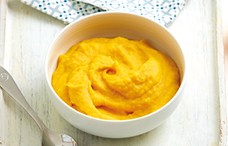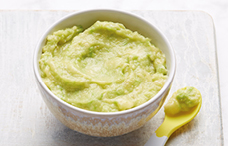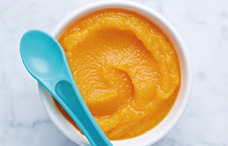Healthy Eating for Kids
We love veggies! However, we all know that getting kids to eat vegetables every day can sometimes be a hard sell. But results from multiple Australian health surveys show that kids simply aren’t consuming enough vegetables and don’t meet current daily requirements. According to the CSIRO VegKit Project, only 6% of children aged 2-17 years of age eat the recommended amount. So, what can we do as parents and caregivers to turn the tide? Find out below.
Kids vs. Veggies!
In a paper published by the NSW Ministry of Health1, it is said that “children may need to try new fruits and veggies up to 10 times before they accept them”. In other words, the more veggies they eat, the more they’ll like them. So, with that in mind, here are a few tips to help you encourage kids to eat their greens…before dessert!
1. Variety is the spice of life
Try to offer a variety of veggies every day. As well as incorporating a serve of veg into main meals, you can incorporate them into snacks, like the humble hommus and carrot stick combo.
2. Make vegetables first foods
We develop our likes and dislikes at a young age. Giving infants vegetables as some of their first foods will help them learn to love them. Introduce them to puréed greens, soft flavours like broccoli or spinach, and sweet flavours like sweet potato and pumpkin. According to Eat for Health, the second half of baby’s first year of life is a time when they learn much about food and family eating. Try variety in your recipes for purées and vegetables as first foods. Here are a few of our favourites for you to try:
What are the best foods and textures to start with? According to Pregnancy, Birth and Baby, offer your baby healthy, nutritious foods which will support their growth and development. For more information on baby’s first foods, you can download Eat for Health’s guide on the best food for infants. Learn more about textures and foods you can try here. Or you can read the Royal Children’s Hospital, Melbourne’s You can also download the Baby’s First Foods brochure, from the Royal Children’s Hospital Melbourne, here.
For more information and ideas, check out the Queensland Government’s guide to Baby’s First Foods.
3. Let natural flavours shine
Instead of trying to mask or hide them, enable children to taste the natural flavours of veggies. Masking them only reinforces the idea that veggies are undesirable, which is simply not true! Plus, trying new recipes can encourage the whole family to love their veggies even more.
4. Presentation matters
Never underestimate the appeal of colour and shapes. Chopping and arranging veggies in fun ways makes them even more attractive and easy to eat. A face made out of capsicum and cucumber? Yes, please!
According to Nutrition Australia, offering a wide variety of colours in children’s food is not only visually appealing, but also ensures children are receiving a great variety of nutrients. You can also find more information on encouraging children to “eat a rainbow’ and additional resources here.
Cooking with Kids
Involving kids in the kitchen is another way to introduce them to the colourful world of veg. Let them watch over your shoulder to see all the different ways you can prepare vegetables. If they’re old enough, they could even help you chop (under supervision, of course). Cooking kid’s meals is even more rewarding when they are made a part of the process.
Healthy Lunchbox Ideas
When it comes to filling the contents of a kid’s lunchbox, there is so much to consider. Is it nutritious? Is it waste free? Will it just end up in the bin or at the bottom of their school bag? Plus, with so many processed foods and sugary products out there, choosing healthy snacks for kids can be tricky. But it doesn’t have to be. Let’s break down the four components of a healthy lunchbox.2
1. Main item
Consider this the main course. It could be a sandwich or wrap, pasta with veggies, soup, a frittata or sushi. If you’re making a sandwich, choose wholemeal or multigrain varieties and include lots of veggies. Using a variety of different fillings throughout the week will also keep the kids interested in the menu. Why not try smoked salmon (high in protein) and cream cheese (promotes gut health) or vegemite and lettuce?
2. Fruit or veg snack
A piece of fruit, cut-up veggies, tinned fruit or a salad are all great options. Bite-sized options like cherry tomatoes and grapes are easy to eat and are both made up of over 80% water, making them juicy and refreshing on a hot, Aussie school day.
3. Another snack from a different food group
Include a second snack based on a core food. Depending on your kid’s taste you could choose reduced fat yogurt, grainy crackers with reduced fat cheese, raisin bread, a boiled egg or plain popcorn. Limit foods with added sugar, added salt and those high in saturated fat.
4. A bottle of water
Encourage your kids to drink water throughout the day by sending them off to school with a full water bottle. Always choose water over juice or any sweetened drinks. In summer, you could put a second drink in the freezer overnight and let it thaw as the day goes on. There’s nothing like a cool, refreshing drink after an intense game of handball.
Healthy Lunchbox Inspiration
Looking for healthy lunchbox inspiration can sometimes be daunting. There are many places to turn to and it’s hard to know which ones you should follow. Nutrition Australia’s fact sheet on healthier lunchbox swaps, is available here.
The kids are alright
There will always be the temptation of unhealthy foods both at the canteen and in the playground. However, there are initiatives in place to try and change this. For example, The NSW Healthy School Canteen Strategy3 is increasing the availability of healthy food and drink options in school canteens to make the healthy choice, the easy choice. These kinds of initiatives, paired with packing a healthy lunchbox are how we can make a Good Difference to our children’s health.
Lunchbox information and suggestions
Preparing for the kids to go back to school? Want some information on preparing lunchboxes for your kids? Need inspiration? Want to get the kids involved? Check out this page, it contains all of this and more plus some great fact sheets courtesy of Nutrition Australia.
Frequently Asked Questions
How to get kids to eat veggies
Setting a good example with vegetables will encourage your kids to try them too. Incorporate veg into snacks and praise them when they eat them. Involving kids in the cooking of vegetables can also make it a fun experience for all.
Why is a healthy lunchbox important?
Children are more alert when they are fuelled by nutritious food. By giving them healthy food, they will have higher levels of concentration throughout the day, which is important for learning.
How to get kids to eat healthy
Getting the kids to eat healthy starts with being a role model yourself. Stock the cupboard with healthy snacks, have regular family meals together and introduce them to a range of difaferent types of fruit and veg.



